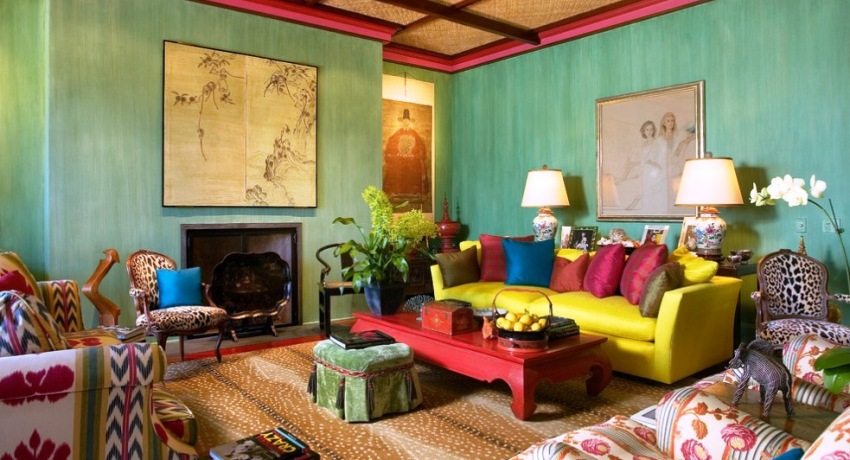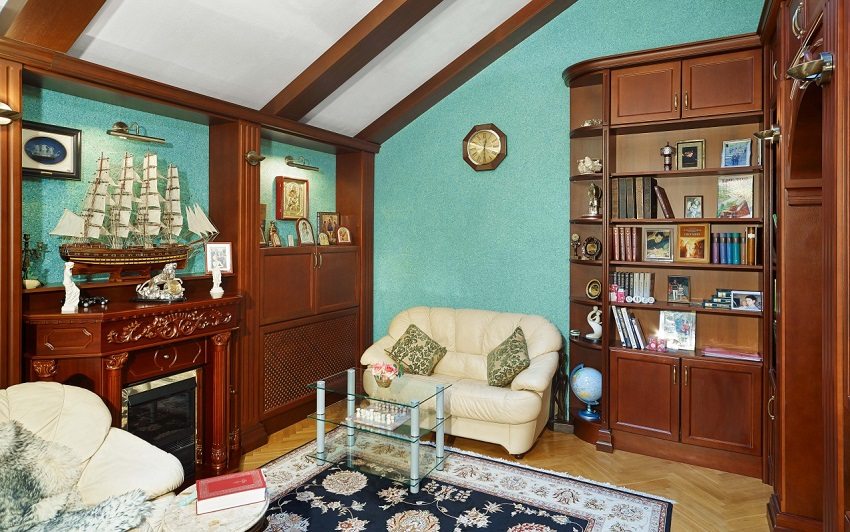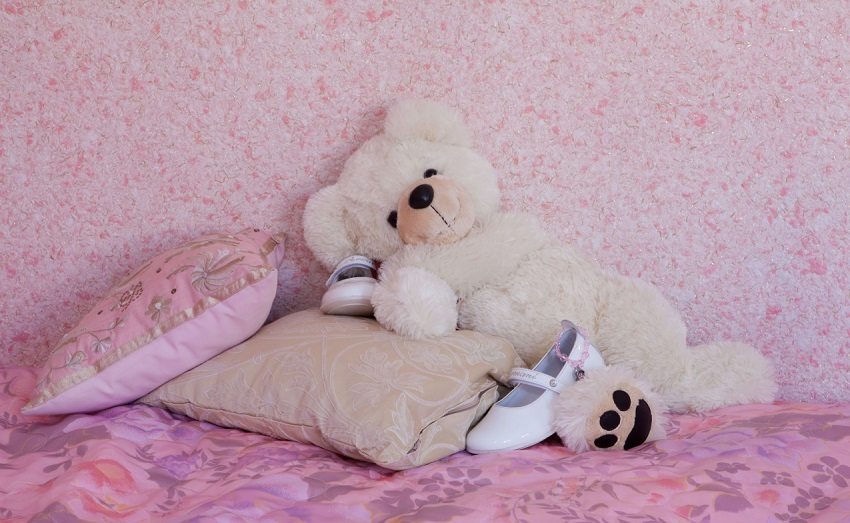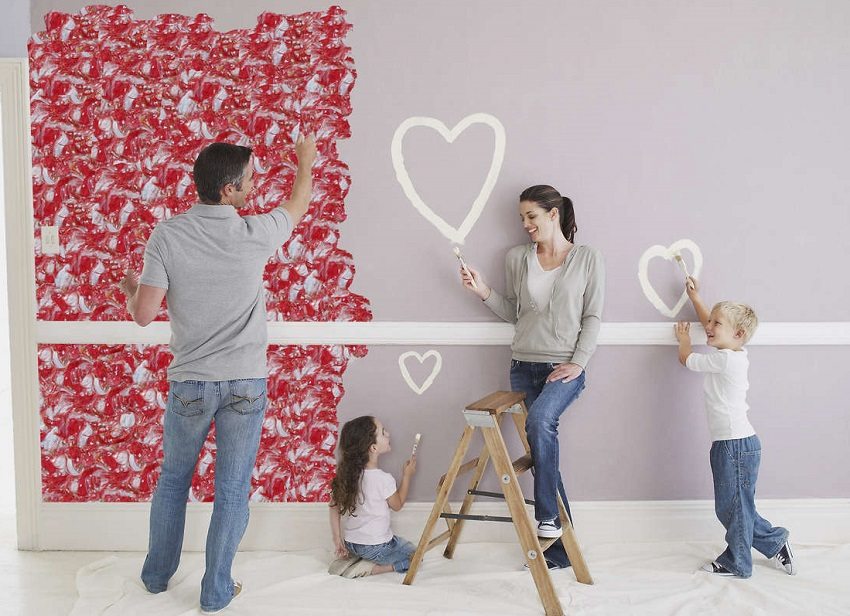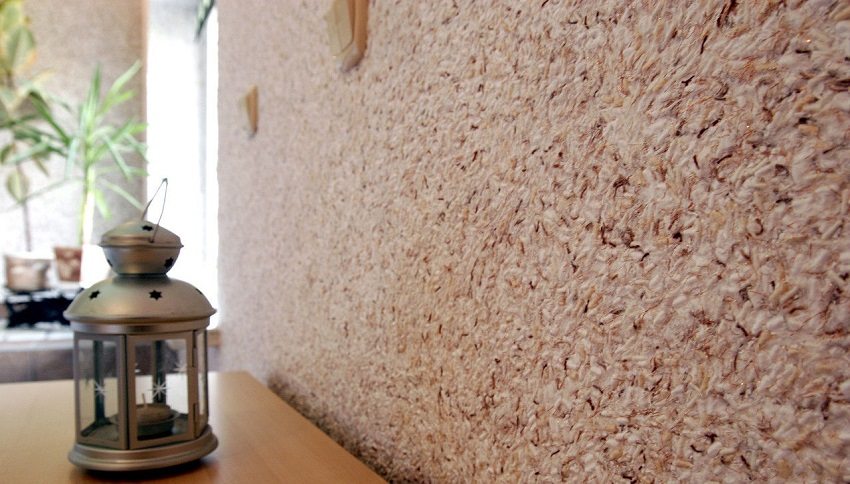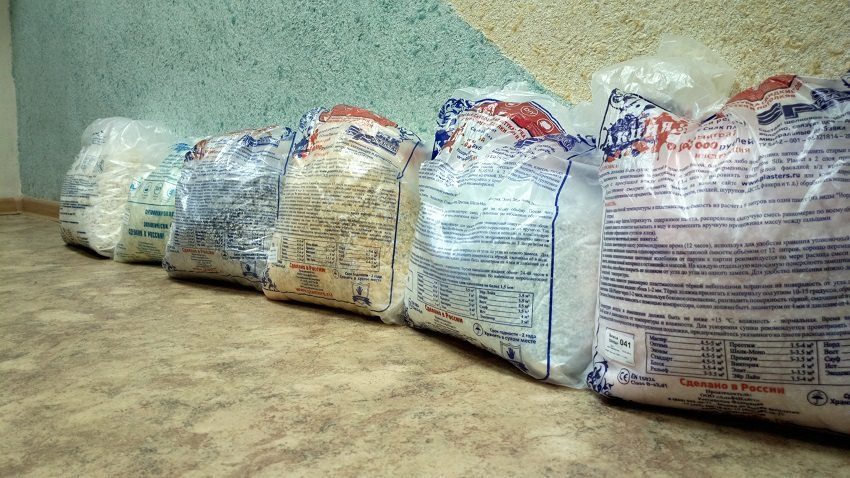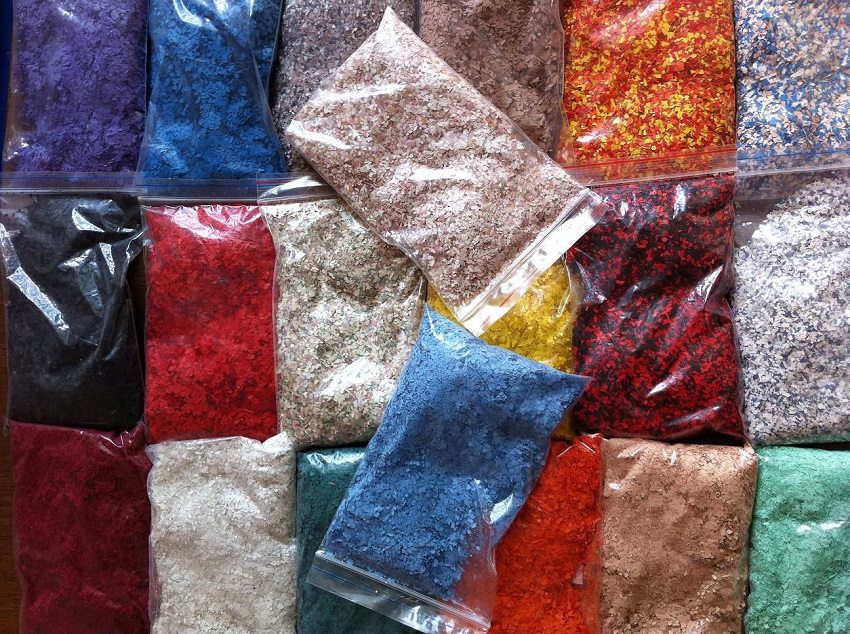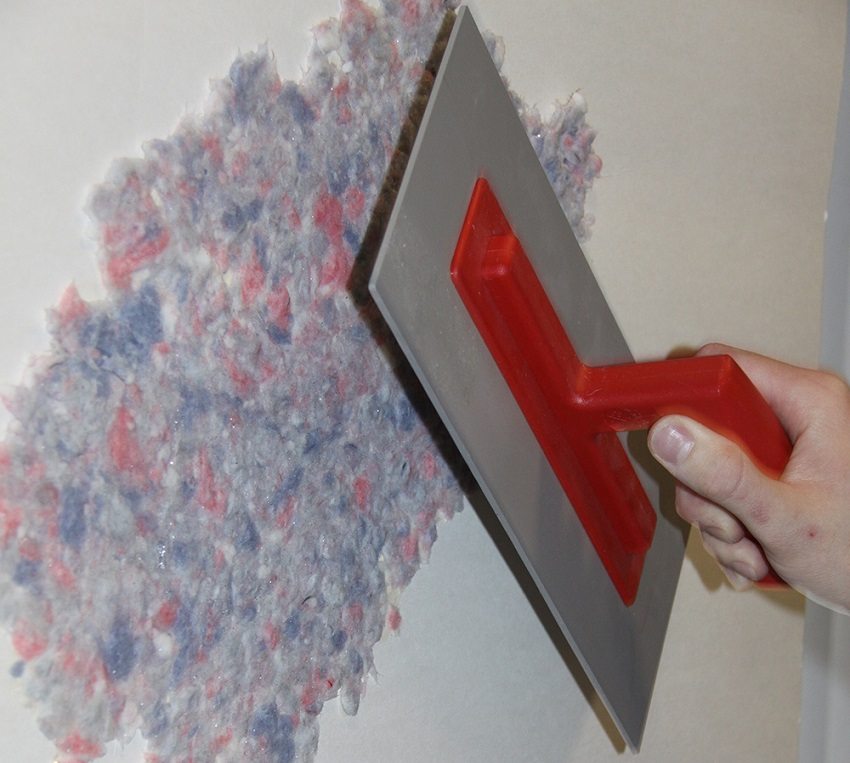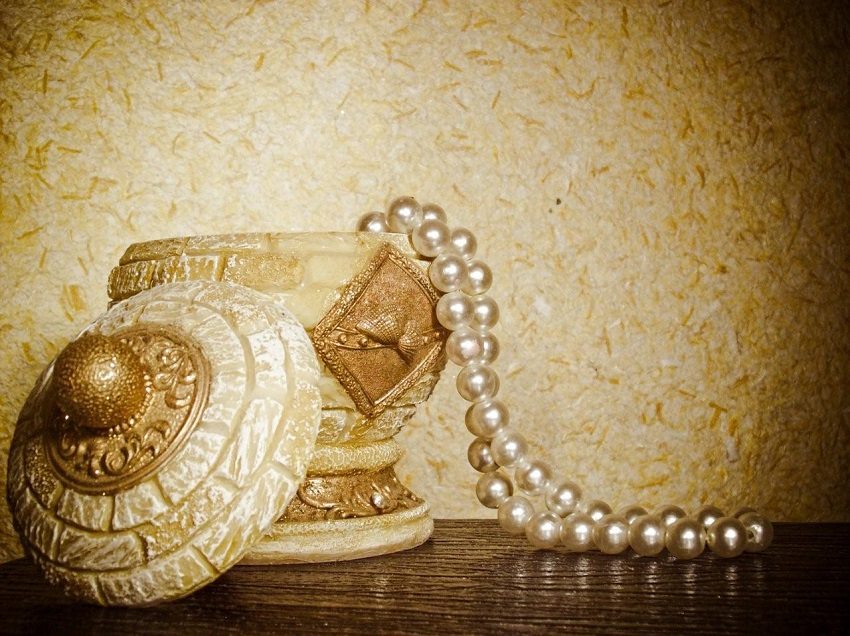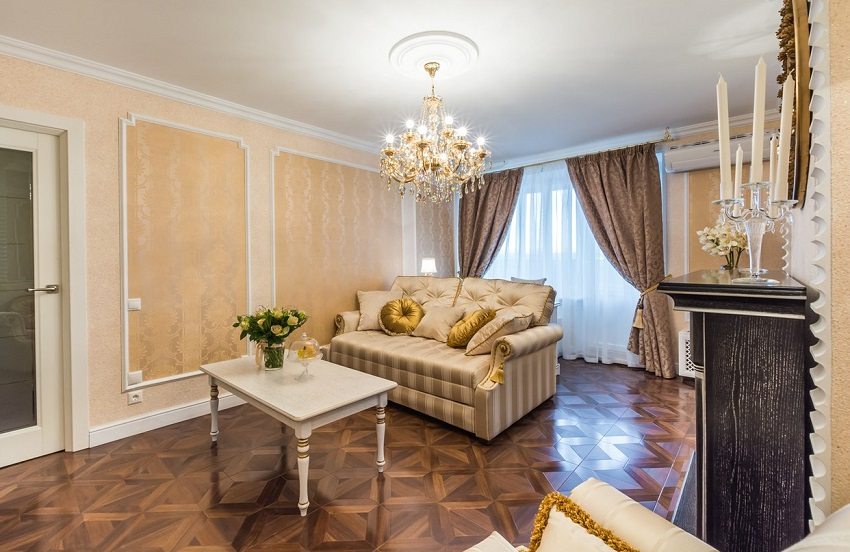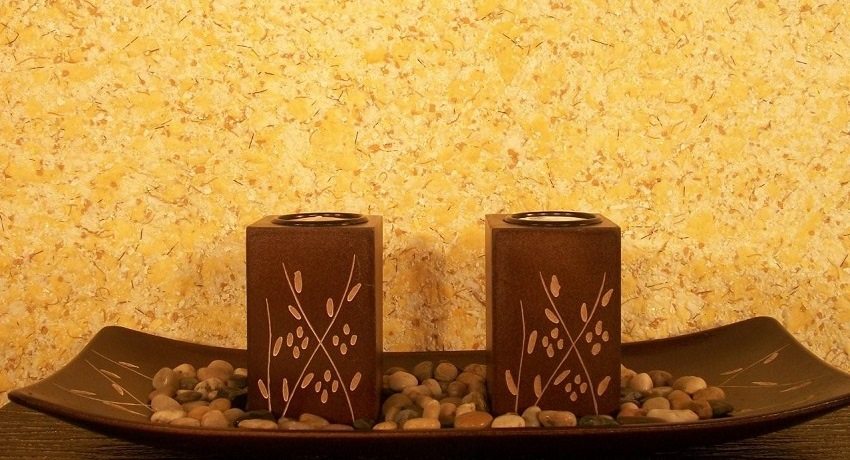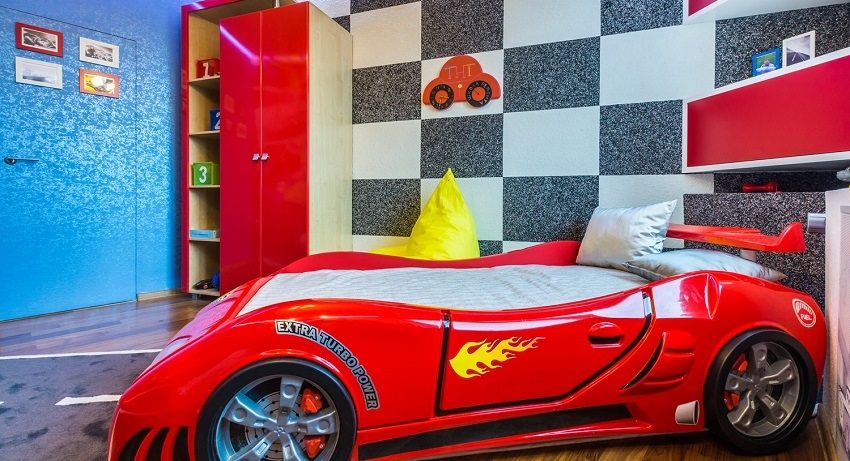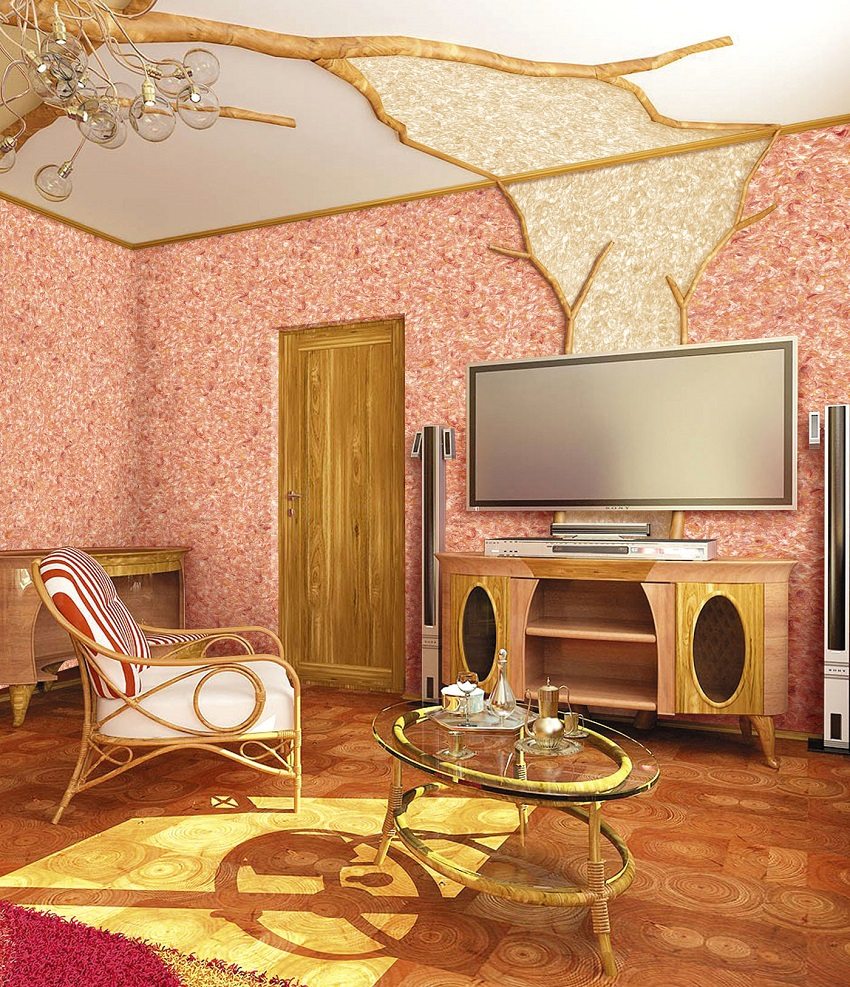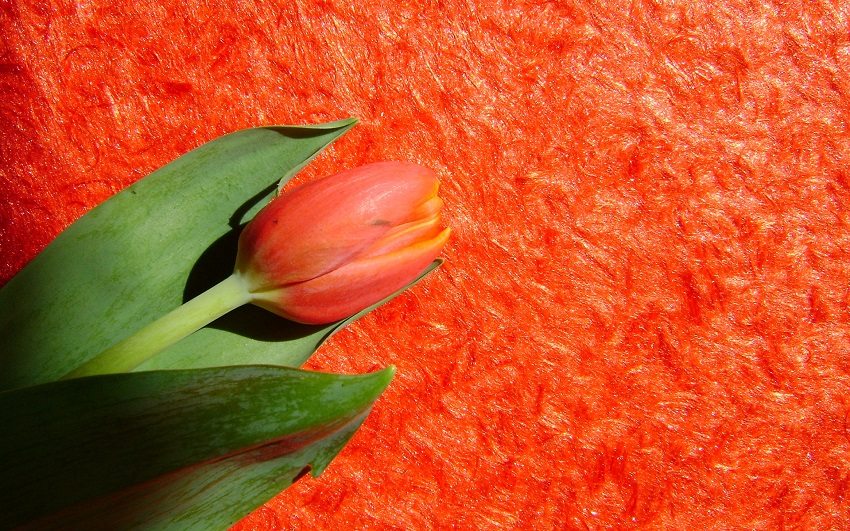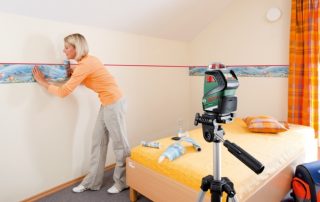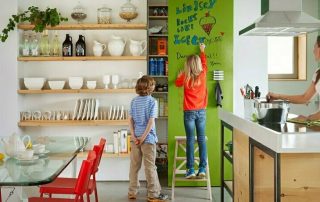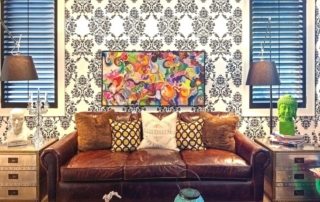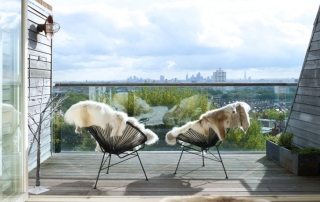Liquid wallpaper appeared on the Russian market relatively recently, but it has already won its special place among other finishing materials. Although many still prefer classic paper wallpapers to them, mistakenly believing that they are easier to work with. We will understand in more detail what a finishing coating is - liquid wallpaper, how to apply it to a wall and other surfaces. Is their application really a complex labor-consuming process that requires special training?
Content [Hide]
What is liquid wallpaper
Liquid wallpaper Is, in fact, decorative plaster... On sale, these wallpapers are presented in dry and liquid form, but the first option is more common. The price for a pack of liquid wallpaper will depend on the manufacturer, the composition of the mixture and the type of filler. In dry form, they look like sawdust, packaged in 1 kg bags.
The main components of this mixture:
- cellulose as well as cotton fiber;
- dye;
- glue (most often it is KMS glue);
- decorative components (granules, shavings, glitters, threads).
This dry mixture is diluted with plain water, and applied to the wall, like other types of finishing plasters, using a trowel or spatula.
The end result is a beautiful, eco-friendly decorative coating, warm and rough to the touch, with excellent thermal and sound insulation properties.
Since the composition involves the manufacture of paper, it is quite easy to make liquid wallpaper with your own hands. In addition, there are full-fledged tutorials and videos: DIY liquid wallpaper.
Why liquid wallpaper is beneficial
This material has earned positive reviews consumers all over the world thanks to the characteristic advantages:
- ease and simplicity of application. Mixing does not require a lot of space and expensive tools. The application process is so simple that even a non-professional can handle it;
- versatility. Liquid wallpaper is compatible with almost any material: concrete, wood, drywall, Fiberboard, MDF, plaster, plywood, paint and even metal. After application, a seamless surface is obtained, so there is no need to worry about joints, fits, etc. In addition, they are able to hide small irregularities and depressions;
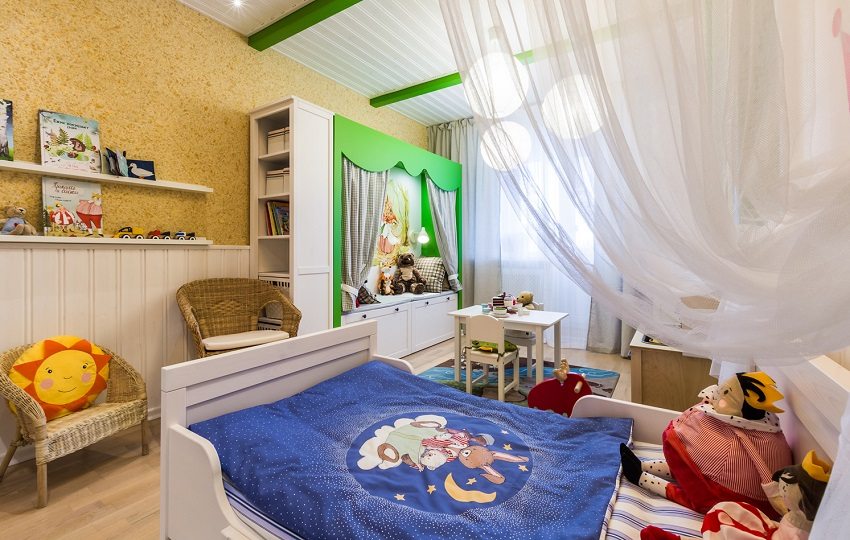
Liquid wallpaper repels dust, is resistant to temperature extremes, does not absorb odors, does not fade, is fireproof and not subject to deformation
- good household performance. Liquid wallpaper repels dust, is resistant to temperature extremes, does not absorb odors, does not fade, is fireproof and is not subject to deformation;
- aesthetic appeal. This finishing material, due to its structure, allows you to create various variations of decorative solutions. Even professional designers are happy to use liquid wallpaper. Photos of interiors where this coating has been successfully used can be found on the Internet;
- affordable price. For a square meter of liquid wallpaper, the seller will take from 150 to 300 rubles.
Useful advice! If the wall on which the liquid wallpaper is applied is dirty, then there is no need to completely renew the coating. It is enough to moisten the desired area with water, remove with a spatula and fill this area with the again diluted mixture.
Liquid wallpaper: application technology. Features, tricks, tips
It is easy to understand on which walls liquid wallpaper can be applied - if you study the composition again well. The presence of an adhesive component allows this type of wallpaper to be applied to almost any surface. Let's figure out thoroughly what liquid wallpaper is, how to apply it to the wall.
Preliminary surface preparation
Liquid wallpaper is a very democratic finishing material, and does not require a perfectly flat wall for application, therefore, large investments in preparatory work will not be required.
Liquid wallpaper can be applied directly to the plaster. But to obtain a high-quality result, it is advisable to prepare the surface:
- All dirt should be removed from the walls, as well as old wallpaper, peeling plaster and paint.
- All protruding elements such as nails and screws must be removed. If the removal of some elements is impossible, they need to be primed or painted over with water-based paint. Oil paint is used to seal metal protrusions.
- Plasterboard walls require the entire surface to be putty, not just the joints.
- The entire surface for applying liquid wallpaper must be primed. The primer is applied in 1-2 layers.
- The final stage of the rough work will be the application of a special putty under wallpaper... You can replace it with water-based paint.
Frequently asked questions regarding application:
- can liquid wallpaper be applied to paint? If the painted surface is free of blisters and peeling elements, the surface must first be primed using a deep penetration primer. A day later, you can directly apply liquid wallpaper.
- can wallpaper be glued to liquid wallpaper? First, liquid wallpaper must be removed from the wall. This is easy to do: just soak them with water and remove with a tool. If the surface was well prepared before applying liquid wallpaper, then it will be enough to apply several coats of primer. If the wall has not been sufficiently leveled, then all the necessary preparatory work should be carried out before gluing the roll wallpaper.
Important! It should be borne in mind that the color of the walls under the wallpaper should be uniform, preferably white, or in the same color scheme as the wallpaper. Otherwise, darker areas will show through after drying.
Preparation of the composition of future wallpaper
Before cooking, you should carefully read the instructions. Usually the composition must be prepared in advance, about 5-10 hours before application. For preparation, pour the contents into a small container with warm water (20-40 degrees), after mixing the mixture itself, if its constituent components are packaged in different packages.
All proportions must be observed according to the instructions, but usually 4.5 liters of water are required per bag (1 kg). You should get a creamy consistency. If the solution is too thick, you can add some more water.
Stirring can be done by hand, while ensuring that there are no lumps left. Many experienced professionals do not recommend using a mixer for kneading, as long threads and fibers can break them.
Only one bag should be kneaded in one container at a time. Part of the package must not be soaked. It is necessary to immediately prepare such an amount of mortar that will cover the wall from corner to corner so that no difference is seen during transitions. The resulting solution should be infused for several hours. Stir thoroughly before use.
If the composition assumes the presence of decorative elements (shine, granules, etc.), they are first poured into the water, and only then the base is added. Liquid wallpaper with a pattern (the photo can be viewed on the Internet), as well as with decorative fillers, look especially interesting. If the components seem large, you can pour them yourself and add chopped up.
Liquid wallpaper: how to apply it to the wall
Applying liquid wallpaper is a simple process. The main thing is accuracy, attentiveness and desire. People with a creative streak will especially enjoy the process, since the data wallpaper allow you to create various decorative ornaments and appliques.
Required tools for application: spatula, float, roller with textured relief (if relief coating is supposed), special gun.
A positive temperature (at least 10 degrees) in the room is a prerequisite for applying liquid wallpaper.
A detailed description of how to apply liquid wallpaper on the walls (the video material can be studied further) will make it possible to easily cope with the process.
How to properly apply liquid wallpaper to the wall? You need to take a small portion of the wallpaper with your hands or with a spatula, distribute it on the prepared surface. The whole process is no more complicated than applying ordinary plaster. For grinding, special graters are often used (they are slightly narrowed and made of transparent material). The required layer thickness is 2-3 mm, although it may differ for different types of wallpaper.
You should not press hard on the tool, but it is recommended to hold the float at a slight angle (5-15 degrees) in relation to the wall. This will create an even layer of the desired thickness. You need to level it with movements in different directions, but you can combine the direction of movement of the trowel, if the design provides it. The principle of application in the corners will help you understand the video: how to glue liquid wallpaper.
Related article:
How to choose paint for walls in an apartment? Main types and properties. The main functions and performance properties of paints and varnishes. Varieties of conventional and textured paints. Tips and photos.
The next portion of the solution is added to the one already on the wall, carefully leveling. The main thing is that the result is a homogeneous seamless surface, therefore, special attention should be paid to the joints and borders.
If some area turned out with a clear defect, it can be removed by soaking with water.
The final step will be to level the entire surface with a float dipped in water.
They will clearly help to make sure how simple the whole process of applying liquid wallpaper, video and photographic materials that can be found on the net is.
Useful advice! The actual consumption of liquid wallpaper may differ from that declared by the manufacturer. It is usually slightly higher. If the calculation is indicated on the package: 1 package for 4-6 square meters, the total amount of material should be taken from the calculation - a package for 3-4 square meters.
Drawings on the wall with liquid wallpaper
Designers love these wallpapers very much, because they can be used to create incredible patterns and designs, thereby making any interior unique and original. On the net you can find numerous photos of liquid wallpaper with a pattern in the interior.
But to make your home unique, you don't have to get a profession of a designer. Having studied in detail how to apply liquid wallpaper at home, you can easily make a unique ornament that will delight you with the fact that it was made yourself.
First, the drawing is done with a pencil or marker, you can use special stencils.
The material is applied in very small portions. It is important to observe the color order (first, all areas are filled with one color, then with another, etc.). It is impossible to apply areas of different colors immediately end-to-end, you must wait until completely dry and only then fill the gaps. The contour can be drawn with a marker or felt-tip pen after the entire canvas has dried.
The process of creating ornaments on the walls is a painstaking work that requires a lot of patience, time and effort. However, the result is worth it. You can see various photos of drawings on the walls with liquid wallpaper and choose something for yourself. Or you can turn on your imagination and create a real author's masterpiece.
Is it possible to apply liquid wallpaper to the ceiling
This type of wallpaper is a versatile material that is also suitable for decorative ceiling decoration.
How to apply liquid wallpaper to the ceiling is one of the frequently asked questions. Application technology is the same as for walls. The material is applied to the ceiling surface and leveled with a tool.
For finishing the ceiling, it is more convenient to use another method of applying liquid wallpaper - spraying with a spray gun. The main feature is that it must be applied in several layers. The first layer is -1-1.5 mm, and then the main one, of the desired thickness.
In rooms where the level of humidity is high, for example, in a kitchen or bathroom, an additional coating with a layer of acrylic varnish is necessary. This will add moisture resistance to the surface. But this should be done after the wallpaper is dry.
Another difference from roll wallpaper is that liquid wallpapers are not afraid of drafts. The room can be ventilated immediately and it is even better if the wallpaper dries naturally.
They will get their final appearance in about 12 hours.
Making a drawing or highlighting a zone is as easy as applying liquid wallpaper to the ceiling (the video tutorial is a clear confirmation of this).
Despite the abundance of materials on the guidance for applying liquid wallpaper, in the process of direct finishing, many more questions arise. You can additionally glean information from the video "How to glue liquid wallpaper on the wall."
The main thing when decorating a room is to follow all the recommended instructions and technologies, maintain the correct proportions, add to this a creative mood and the desire to make your home cozy and unique.
